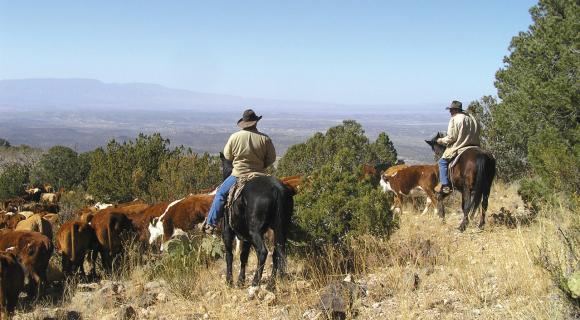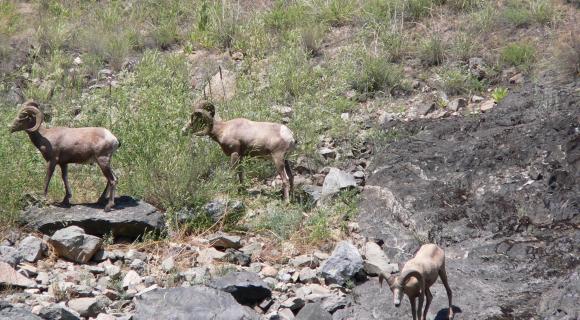- Mark S. Thorne; John M. HarperBody
Rangelands provide the greatest benefit to society when they are used for multiple uses rather than for a single purpose. Globally rangelands are used to raise livestock for food and fiber, harvest renewable and non-renewable energy and mineral resources, provide habitat for wildlife, and open space for human enjoyment and recreation.
The grasses, forbs and shrubs that grow on rangelands are an important source of forage for grazing animals. Livestock efficiently convert these forages into high-density meat protein to feed our growing global population. Domestic livestock grazing often reduces fine fuels which if left unchecked create a greater risk of wildfire. Some grazing by domestic livestock protect important habitat for rare and endangered flora and fauna species. Rangelands are also critical to preserving open space for aesthetics, recreation and providing important habitat for many species of wildlife. Additionally, rangelands provide renewable resources such as clean water and wind for energy production and non-renewable resources like oil, coal, and other minerals.
In this section you will find information on the various uses of rangelands. You will discover how livestock grazing on rangelands can help supply the growing global demand for meat protein. Loss of open space is an emerging issue globally. Here you will learn how rangelands preserve that open space for recreation, wildlife habitat and aesthetics while also meeting society’s needs for energy, renewable resources, and minerals. Finally, you will discover how rangelands play an important ecological role by reducing the effects of carbon dioxide on the atmosphere through carbon sequestration.
Get reliable rangeland science
Toggle Search



